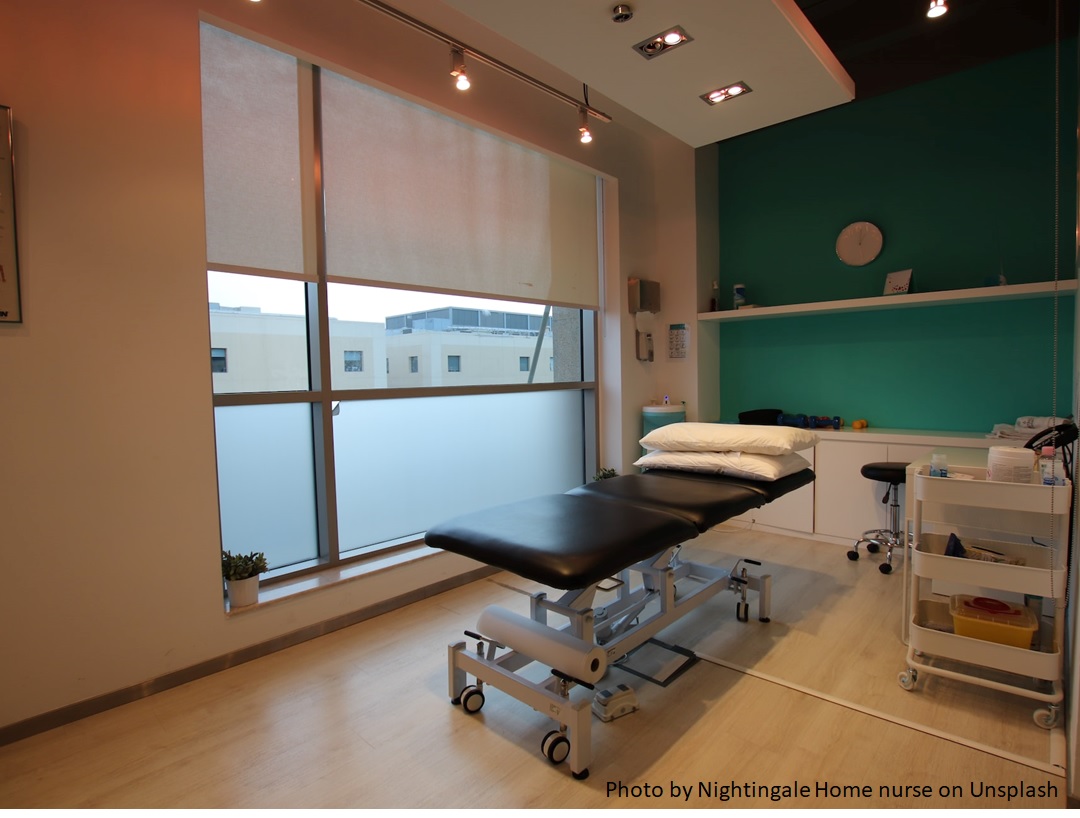Physiotherapeutic intervention in a girl with Pfeiffer syndrome. Case Report
Intervención fisioterapéutica en una niña con síndrome de Pfeiffer. Reporte de caso

This work is licensed under a Creative Commons Attribution-NonCommercial-NoDerivatives 4.0 International License.
Show authors biography
Introduction. Pfeiffer syndrome is an autosomal dominant congenital disorder that affects 1 in 100,000 live births. Variable malformations, developmental delay, and neurological complications occur.
The objective of this case report is to describe the physical therapy intervention on a girl with type 2 Pfeiffer syndrome, which was based on the concept of training focused on specific tasks, the analysis of changes in postural control, and education and empowerment to parents.
Case presentation. A girl who began physiotherapy treatment with a frequency of two weekly sessions, from 6 months to two years, when she managed to walk independently for eight consecutive steps. At 12 months, she achieved independent sitting, at 18 months the girl was in the 50th percentile according to the Alberta scale, and at 24 months she was able to take eight continuous steps without assistance and perform bimanual reaching and manipulation with modified objects.
Conclusion. Task-based training and a patient and family-centered approach allowed a girl with type 2 Pfeiffer syndrome, with deficiencies in musculoskeletal and movement-related bodily functions and structures, to ambulate independently for eight steps at two years and to be interested in manipulating and exploring her immediate environment. Physiotherapy intervention can benefit children with Pfeiffer syndrome or similar syndromes, who evolve with deficiencies in their development, improving their quality of life.
Article visits 1168 | PDF visits 73
- Torres-Canchala L, Castaño D, Silva-Beltrán N, Gómez AM, Victoria A, Pachajoa H. Prenatal Diagnosis of Pfeiffer Syndrome Patient with FGFR2 C.940-1G>C Variant: A Case Report. The Application of Clinical Genetics. 2020 Aug;13:147–50. doi: https://doi.org/10.2147/tacg.s251581
- Raposo-Amaral CE, Denadai R, Máximo G, Raposo-Amaral CA, Ghizoni E. Pfeiffer Syndrome. Plastic and Reconstructive Surgery - Global Open. 2020 Apr;8(4): e2788. doi: https://doi.org/10.1097/GOX.0000000000002788
- Navazo- Eguía AI, Suárez-Muñiz E, García-Vicario F, de la Mata- Franco G, Suárez-Fernández J, Gómez-Sáez F. Síndrome de Pfeiffer. A propósito de un caso. Revista de la Sociedad Otorrinolaringológica de Castilla y León, Cantabria y La Rioja. 2011;2(8):1-8. Disponible en: http://hdl.handle.net/10366/124401
- Mavridis N, Rodrigues D. (2020) Nervous system involvement in Pfeiffer syndrome Ioannis. 2021 Feb;37(2):367-374. doi: https://doi.org/10.1007/s00381-020-04934-7
- Roldán-Arce J, Villarroel-Cortés C. Síndrome de Pfeiffer tipo 2. Informe de un caso y revisión de la literatura. Acta Pediatr Méx. 2020; 34(1):43-47. Disponible en: https://ojs.actapediatrica.org.mx/index.php/APM/article/view/609
- Quezada Galindo, JL, Garay García LM, Cuenca López RA, Torres Correa ME, Tuárez Macías KE, Asitimbay Regalado MG, et al. Síndrome de Pfeiffer materno y neonatal. Archivos Venezolanos de Farmacología y Terapéutica. 2017;36(6):58-161. Disponible en: https://www.revistaavft.com/images/revistas/2017/avft_6_2017/sindrome.pdf
- Huertas Tacchino E, La Serna-Infantes J, Alvarado Merino R, Ingar Pinedo J, Castillo Urquiaga W, Zárate Girao M, et al. Síndrome de Pfeiffer tipo 2: diagnóstico prenatal. Reporte de caso y revisión de la literatura. Revista Peruana de Ginecología y Obstetricia [Internet]. 2019 Jul 1 [cited 2022 Jun 18];65(3):361–6. Disponible en: http://www.spog.org.pe/web/revista/index.php/RPGO/article/view/2196
- Hadders-Algra M. Early human motor development: From variation to the ability to vary and adapt. Neuroscience & Biobehavioral Reviews. 2018;90:411-427. doi: https://doi.org/10.1016/j.neubiorev.2018.05.009
- Cano-de-la-Cuerda R, Molero-Sánchez A, Carratalá-Tejada M, Alguacil-Diego IM, Molina-Rueda F, Miangolarra-Page JC, et al.. Teorías y modelos de control y aprendizaje motor. Aplicaciones clínicas en neurorrehabilitación. Neurología. 2015;30(1);32-41. doi: https://doi.org/10.1016/j.nrl.2011.12.010
- Bremmer M, Nijs L. The role of the body in instrumental and vocal music pedagogy: a dynamical systems theory perspective on the music Teacher's bodily engagement in teaching and learning. Frontiers in Education. 2020;5:79. doi: https://doi.org/10.3389/feduc.2020.00079
- Myers LK. Application of neuroplasticity theory through the use of the Feldenkrais Method® with a runner with scoliosis and hip and lumbar pain: A case report. Journal of Bodywork and Movement Therapies. 2016;20(2):300-309. doi: https://doi.org/10.1016/j.jbmt.2015.06.003
- Kokorelias KM, Gignac MA, Naglie G, & Cameron JI. Towards a universal model of family centered care: a scoping review. BMC health services research. 2019;19(1):1-11. doi: https://doi.org/10.1186/s12913-019-4394-5
- Park M., Lee M., Jeong H., Jeong M, Go Y. Patient-and family-centered care interventions for improving the quality of health care: A review of systematic reviews. International journal of nursing studies. 2018; 87:69-83. doi: https://doi.org/10.1016/j.ijnurstu.2018.07.006
- Moran M, Bickford J, Barradell S, Scholten I. Embedding the international classification of functioning, disability and health in health professions curricula to enable interprofessional education and collaborative practice. Journal of Medical Education and Curricular Development. 2020;7:2382120520933855. doi: https://doi.org/10.1177/2382120520933855
- Fernández-López JA, Fernández-Fidalgo M, Reed G, Stucki Gerold S, Cieza Alarcos. Funcionamiento y discapacidad: la clasificación internacional del funcionamiento (CIF). Rev. Esp. Salud Publica [Internet]. 2009 Dic [citado 2021 Feb 23];83(6):775-783. Disponible en: https://doi.org/10.1590/S1135-57272009000600002
- Toovey R, Bernie C, Harvey AR, McGinley J, Spittle A. Task-specific gross motor skills training for ambulant school-aged children with cerebral palsy: a systematic review. BMJ Paediatrics Open. 2017;1:e000078. doi: https://doi.org/10.1136/ bmjpo-2017-000078
- Serrano Gómez ME, Camargo Lemos DM. Reproducibilidad de la Escala Motriz del Infante de Alberta (Alberta Infant Motor Scale) aplicada por fisioterapeutas en formación. Fisioterapia. 2013 May;35(3):112–8. doi: https://doi.org/10.1016/j.ft.2012.09.002
- Ferre-Fernández M, Murcia-González MA, Ríos-Díaz J. Traducción y adaptación transcultural del Gross Motor Function Measure a la población española de niños con parálisis cerebral. Rev Neurol. 2020;71:177-85. doi: https://doi.org/10.33588/rn.7105.2020087
- Smithers-Sheedy H, Badawi N, Blair E, Cans C, Himmelmann K, Krägeloh-Mann I, et al. What constitutes cerebral palsy in the twenty-first century? Developmental Medicine & Child Neurology. 2013 Sep 20;56(4):323–8. doi: https://doi.org/10.1111/dmcn.12262
- Chaná CP, Alburquerque D. La clasificación Internacional del Funcionamiento, de la Discapacidad y de la Salud (CIF) y la práctica neurológica. Revista chilena de neuro-psiquiatría. 2006 Jun;44(2):89-97. doi: http://doi.org/10.4067/S0717-92272006000200002
- Lucas BR, Elliott EJ, Coggan S, Pinto RZ, Jirikowic T, McCoy SW, Latimer J. Interventions to improve gross motor performance in children with neurodevelopmental disorders: a meta-analysis. BMC pediatrics. 2016;16(1), 1-16. doi: https://doi.org/10.1186/s12887-016-0731-6
- Lobo MA, Harbourne RT, Dusing SC, McCoy SW. Grounding Early Intervention: Physical Therapy Cannot Just Be About Motor Skills Anymore. Physical Therapy. 2013 Jan 1;93(1):94–103. doi: https://doi.org/10.2522/ptj.20120158



